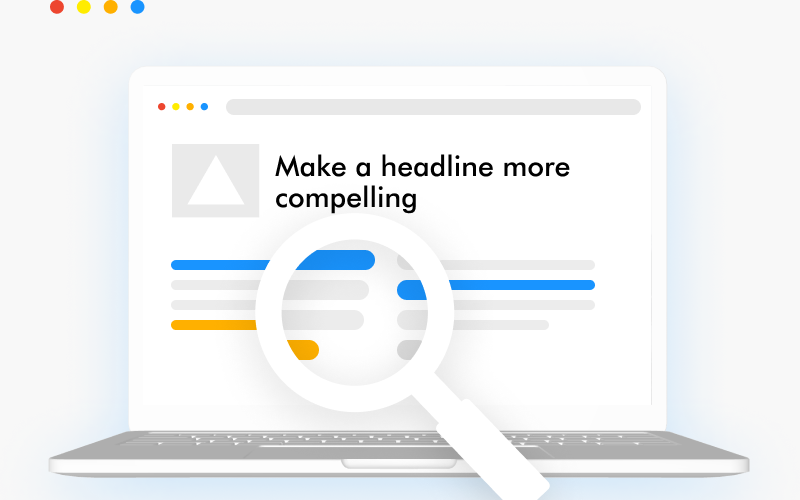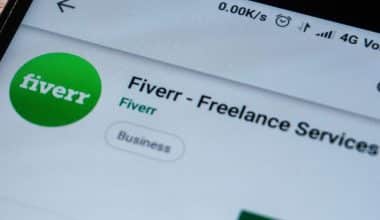Have you ever spent hours writing a wonderful blog post only to have it go unnoticed because of a drab and uninspiring headline? Believe me, it is a frustrating experience. As a content marketing professional for Lamphills, writing a compelling headline is important. After all, your headline is frequently the first (and sometimes only) impression you make on a prospective reader.
According to a recent Copyblogger survey, more than 80% of readers base their decision to read an article simply on the headline. This statistic emphasizes the vital importance of creating compelling headlines that pique interest and encourage clicks.
Aside from the fundamentals of strong verbs and keyword inclusion, there is a lesser-known secret to headline mastery: emotional triggers. Let’s take a deeper look at how to create headlines that emotionally connect with your audience, increasing click-through rates and encouraging engagement with your content.
In my early days at a software firm, I discovered the hard way that a brilliant piece buried beneath a mediocre headline might as well not exist. After revising the headlines for our current articles using strategic templates and SEO best practices, we experienced a 50% spike in traffic and a big rise in engagement. This experience was a watershed moment, demonstrating the importance of headlines in content planning. Let’s look at the benefits of creating a compelling headline.
Key Takeaways
- Over 80% of readers decide whether to read an article based solely on its headline, highlighting the critical importance of crafting compelling headlines to engage potential readers.
- Emotional triggers in headlines, such as curiosity and urgency, significantly enhance click-through rates by connecting on a deeper emotional level with the audience.
- Effective headlines should be clear, incorporate strong verbs and relevant keywords, and be tailored to evoke specific emotional responses to maximize reader engagement.
- Common mistakes in headline creation include using clickbait, being too vague or generic, making headlines overly long, and using complex language that can deter readers.
Benefits of Writing a Compelling Headline
Here are some of the benefits of creating compelling headlines:
- Catching the reader’s interest: A well-written headline draws people in by expressing curiosity, urgency, or emotion.
- SEO Friendly: An optimized headline is SEO friendly since it considers the character limit, user interest, and need, and includes the intended keyword without compromising the intent.
- Gives You a Competitive Advantage: Using captivating headlines helps your content stand out and distinguish itself from the competition.
- Increase in CTR (Click Through Rate): Because a compelling title helps your content stand out, the likelihood of people clicking on it improves significantly.
- Builds authority: A compelling headline, especially one with a distinctive point of view (by examples, expert insights, or bridging a knowledge gap), helps establish authority on the topic/issue/subject.
How Can You Make a Headline More Compelling?
To appeal to a wide range of audiences, your headline must be both data-driven and creatively compelling. Here’s how to improve your headline game:
#1. Understand your audience
Understanding your target demographic is the first step toward creating a great headline. Who are they? What are their hobbies, desires, and pain points? Understanding your audience’s requirements and objectives allows you to personalize your headlines to effectively reach them.
You must grasp what motivates them, what they seek, and their pain areas. The more you know about your target audience, the easier it is to create a headline that will resonate with them. If you’re not sure what your target audience wants, do some research to learn about their preferences. Check online forums like Reddit and Quora to discover what others are saying about a product or service.
Speak their language, utilize relevant terminology, and address their individual issues or aspirations. Aligning your headline with your audience’s interests makes it more compelling and increases the likelihood of engagement. Once you’ve determined what works best for your target audience, you can create a strategy for writing headlines and use it to build long-term connections.
#2. Use Numbers and Data
Numbers are eye-catching. Articles with data-driven headlines are more likely to be shared since they offer quantitative information. For example, “5 Proven Strategies to Increase Your Conversion Rate by 20%” is more likely to be effective than “How to Increase Your Conversion Rate.”
#3. Invoke Curiosity, But Keep It Honest
According to the gap theory of curiosity, when people perceive a knowledge gap, they are motivated to fill it. Use this to your advantage by asking a compelling question or delivering an intriguing fact that they cannot ignore. However, avoid clickbait; the payoff in your piece must meet the promise of the headline.
#4. Utilize the Power of Negative Words
Surprisingly, negative words can boost click-through rates. Words like “never” and “worst” frequently surpass their positive counterparts because they elicit higher emotional responses.
#5. Be detailed and clear
Make your headline as clear as possible to offer the reader a sense of what the piece will be about. Your headline should provide readers a clear picture of what they will find when they read your content. Use numbers and data to make your headline more particular, as they paint a clear picture of what readers may expect from your content.
For example, instead of “Ways to Improve Your Writing,” try “7 Proven Ways to Improve Your Writing.” This is more specific and gives readers a clear idea of what they will obtain from your content.
#6. Use emotion
People are more likely to click on headlines eliciting an emotional response. Using emotional words like “amazing,” “shocking,” or “heartbreaking” might make your headlines more appealing and urge readers to click. Furthermore, try to determine what will elicit emotional responses. Look for the emotions your audience is likely to experience and tailor your headlines accordingly.
#7. Keep things short and straightforward
Your headline should be simple and easy to read, especially in this day and age when people have short attention spans. Try to keep it between 6 and 8 words long. Long, convoluted, or difficult-to-understand headlines may deter visitors from clicking on your post. Short, effective headlines evoke a sense of urgency, compelling readers to click and read more.
A lengthy headline can be overpowering and difficult to read, so keep it concise and to the point. Example: Blockchain with KYC: Improving Security and Efficiency.
#8. Offer a solution
Each headline should contain a solution to a problem. People are constantly looking for ways to enhance their lives, and your headline should offer them something they can’t refuse.
For example, instead of “How to See Liked Posts on Instagram,” write “How to See Liked Posts on Instagram in 5 Easy Steps.” Offering a solution to a problem can make your headline more compelling, increasing the likelihood that readers will click and read.
#9. Use powerful words
Strong phrases elicit an emotional response and make your headlines more appealing. These words can highlight a statement or convey a sense of urgency. Choose powerful, attention-grabbing words that elicit emotion and create a sense of urgency.
Examples include “remarkable,” “proven,” “unbelievable,” “extensive,” “that work,” “revolutionary,” and “outstanding.” These words give your headline a sense of excitement, mystery, and intrigue, making it more compelling.
Example: “Transform Your KYC Process With the Remarkable Potential of Blockchain Technology“.
#10. Optimize your headline for SEO
Optimizing a compelling headline for SEO is an important step in the process. This entails using relevant keywords that your target audience searches for. Use keyword research tools to find long-tail keywords related to your content and incorporate them into your headline. However, avoid stuffing your headline with too many terms, as this might have a detrimental influence on readability. Keep it genuine and informative.
#11. Test and iterate
Write a lot, write often, and constantly test your headlines. Writing compelling headlines is not an exact science; what works for one audience or platform may not work for another. As a result, testing and iterating your headlines to identify the most compelling variations is critical.
A/B testing can be used by developing several variations of headlines and tracking their effectiveness. To assist you make better headlines, you may also use certain headline analysis tools.
Analyze analytics like click-through rates, engagement, and social shares to determine which headlines are most effective with your target demographic. Continuously tweaking and enhancing your headlines based on data-driven insights can help you achieve consistent outcomes.
Unlocking the Power of Emotional Triggers in Headlines (My Top Secret)
Assume you’re the social media manager for a fitness brand. A strong headline with a keyword may be “5 Easy Exercises for a Stronger Core.” This is good, but there is room for improvement.
Headlines that elicit emotions can be much more effective. Take a look at “Burn Belly Fat Faster: 5 Quick Exercises That Actually Work!” This improved headline appeals to the reader’s desire for a quick and effective solution, increasing the likelihood that they will click to learn more.
Here are several emotional triggers to consider while writing headlines.
- Curiosity: Inspire the reader’s curiosity with an inquiry or an unexpected statement.
- FOMO (Fear of Missing Out): Highlight the repercussions of not reading your content.
- Urgency: Give readers a sense of immediacy so they will click straight away.
- Hope and Inspiration: Appeal to the reader’s yearning for progress and positive change.
By intentionally combining emotional triggers into your headlines, you can create titles that have a deeper impact on your audience, raising click-through rates and generating engagement with your content.
Emotional Trigger Audit Template
Many writers struggle to find ways to incorporate emotional triggers into their headlines. This gap can be bridged using the Emotional Trigger Audit Template.
Here’s the breakdown:
- Headline analysis: Identify your current headlines and examine their emotional impact.
- Emotional Trigger Selection: Choose the most appropriate emotional trigger (curiosity, FOMO, urgency, etc.) for your target audience and content.
- Headline Revamp: Change your headline to incorporate the desired emotional trigger naturally and effectively.
By using the Emotional Trigger Audit Template, you can methodically improve your headlines, transforming them from dull announcements to appealing invitations to click and connect with your content.
After introducing emotional triggers into my headline writing process, my click-through rates increased significantly. Headlines that piqued readers’ interest or created a feeling of urgency did especially well, persuading them to read more of the content.
This emotional connection method transformed my content marketing efforts.
Common Mistakes To Avoid When Creating A Headline
- Don’t make it clickbaity: In the short term, misleading or clickbait headlines may increase clicks but undermine your reputation in the long run. Make sure you don’t utilize clickbait methods.
- Do not be unspecific: Your headline should clearly state what viewers may expect from your content. Avoid being too broad or generic, as this will make your reader lose interest.
- Do not make it overly lengthy: Long headlines are not only difficult to read, but they may also be cut off on search engine results pages. Understanding what is not a main component of a SERP snippet, such as the whole headline, is critical. Search engines typically show only the first 70 characters of a headline to give consumers a sense of what the page contains.
- Don’t make it too hard to read: Your headline should always be readable and simple. It is critical to avoid using excessively complex terms, such as jargon, technical phrases, and difficult vocabulary.
Conclusion
Crafting compelling headlines is more than simply keyword placement; it’s about understanding your readers and appealing to their emotions. By understanding the art of emotional triggers, you can transform forgettable headlines into magnetic ones, increasing engagement and driving results for your content.
Ready to maximize the click-worthy potential of your headlines? Which emotional triggers have you found most effective in capturing your audience’s attention? Please share your tips in the comments section below!
Lamphills can also assist you create compelling headlines and content strategies. We provide a range of services to help businesses attract and engage their target audience through the power of smart content development. Let’s talk about your content marketing goals.
Related Articles
- Top 10 Content Marketing Agencies in Nigeria 2024
- Spam Backlinks: The Silent Saboteurs of Your Website’s Credibility
- How To Write A Personal Brand Statement Defines Your Professional Journey (With Free Templates)
- HOW TO WRITE A PROFESSIONAL BACKGROUND: Detailed Guide With Free Templates
- NEWS VALUE: 8 Tips That Will Make Your Content Newsworthy




